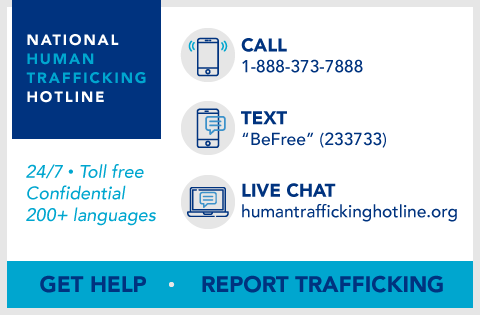MYTH vs REALITY: Debunking Commonly Held Myths Around Human Trafficking
By: Alexandra Berryman
One evening, I was meeting with a group of my Dad’s friends and told them I work in an anti-trafficking business. Usually, when I tell people this, I am met with mild interest and a few questions, but this time a woman grabs me by the wrist and demands “What are you doing about Jeffrey Epstein?”.
I was a bit shocked, but then realized, in pop culture (at least in the US) people often associate human trafficking with Jeffrey Epstein-type figures, fighting against Liam Neeson or the main character in the Sound of Freedom. And while these moments in pop culture have raised awareness about human trafficking in our modern era, they have also created a lot of myths in their wake.
How we understand an issue dictates how we approach its solutions. So, to create solutions to human trafficking, we must debunk these myths – not only in our communities but within ourselves and our organizations. July 30, 2024 is World Day Against Trafficking in Persons – a perfect time to take a realistic look at the issue.
Now, there are many other myths out there, but I drew together some that in my experience come up the most. Whole articles could be written about each one, but for the sake of brevity, we’ll simplify these complex issues. Feel free to reach out to me or a member of the FBA team for more information or resources.
Myth 1: Human Trafficking Involves Only Sexual Exploitation
Reality: While sex trafficking is a big part of human trafficking, there are many other forms too. Labor trafficking is the next most common, even though it often goes unreported and unnoticed. Forced marriage has been happening for ages as a form of trafficking. In the past five years, organ trafficking has also been on the rise.
Myth 2: Human Trafficking Requires Transportation Across Borders
Reality: Trafficking is a bit of a misnomer because it does not necessarily involve the transportation of a person. A person can be trafficked within their own country, city, neighborhood, or even their own home.
Instead, the root of human trafficking is force, fraud, and coercion. This happens when a person has been tricked into a situation, forced to remain against their will, threatened with physical or emotional harm, and/or is not properly compensated for services/products rendered. Not all of these characteristics need to be present for a situation to be classified as trafficking.
Myth 3: Only Women and Children are Victims
Reality: Men are also victims of human trafficking, especially in labor trafficking scenarios. While women and children often receive the most attention, men constitute a significant portion of trafficking victims. The International Labour Organization estimates that of the 25 million forced labor victims worldwide, about 10 million are men. These men are commonly exploited in industries like agriculture, construction, and mining, enduring harsh conditions and threats of violence. The United Nations Office on Drugs and Crime reports that approximately 19% of identified trafficking victims globally are men, and the ILO reports that 63% of those affected by labor-based trafficking are men. Recognizing that human trafficking affects individuals of all genders is crucial for providing adequate support and protection for all victims.
Myth 4: People that have Been Trafficked Will Seek Help When in Public
Reality: People who have been trafficked often do not seek help due to fear of their traffickers, language barriers, lack of trust in authorities, or lack of knowledge about their rights. Often traffickers will sow seeds of fear or doubt, convincing people under their control that they have broken the law and will be arrested if they go to the police.
It is essential for people to know their rights and to be aware of what channels will help them regain their freedom.
Myth 5: Human Trafficking Always Involves Physical Force
Reality: Traffickers often use psychological coercion, threats, manipulation, and deception rather than physical force to control their victims. Shame and fear are very strong emotions and can be often used by traffickers to convince their victims that they cannot return home due to the social stigma. Additionally, if a person was trafficked with their family or made social connections with other people in the compound, traffickers will threaten violence against them as a deterrent.
Myth 6: Human Trafficking Only Happens in Poor or Developing Countries
Reality: Human trafficking is not confined to any specific economic or developmental status; rather, it is a pervasive issue that transcends borders and socioeconomic conditions. Developed countries also grapple with instances of human trafficking, which can manifest in various forms such as forced labor, sexual exploitation, or organ trafficking. The complex nature of modern trafficking networks means that no region is immune, and vulnerabilities can arise in even the most affluent societies. Efforts to combat trafficking must therefore be comprehensive and address both the supply and demand sides of this global phenomenon.
Myth 7: Human Trafficking Victims Always Want to Escape
Reality: Some victims may not recognize themselves as victims due to manipulation, dependency on the trafficker, cultural and familial pressures, lack of understanding of the term trafficking, as well as their own self-image. There have been cases of women who have been trafficked into brothels in India taking on the identity of a “prostitute” and seeing their new situation as a profession.
The mind is a powerful tool. As practitioners and advocates, we must understand how painful and re-traumatizing it can be to show a person that they have been trafficked. As we engage in trauma-informed care, we must first understand how a person sees themselves in light of their situation, and then come alongside them as they step into a different, more dignified life.
Myth 8: Trafficking Is Always a Crime of Organized Crime Networks
Reality: Often when we think of trafficking, we think of large, sophisticated, and dangerous crime syndicates. While they are certainly out there and involved in trafficking, it is much more likely to be carried out by individuals, small businesses, neighbors, or even family members.
Myth 9: Human Trafficking Victims Are Always Physically Confined
Reality: Victims may not always be physically restrained. They can be controlled through psychological manipulation, threats to themselves or their families, financial control, or the withholding of legal documents. They may appear to move freely but are still under the control of their traffickers. As a result, this very common misconception can often lead to incidences of trafficking being under-reported and under-prosecuted (in some countries).
Myth 10: Victims of Human Trafficking are Always from Poor Backgrounds
Reality: While poverty can be a risk factor, victims can come from any socioeconomic background. Traffickers exploit a variety of vulnerabilities, including emotional and psychological issues, lack of family support, or a desire for better opportunities.
Personally and professionally, I am so grateful that more people are coming to understand the issues of human trafficking in the modern era. As practitioners and as the Alliance, we must do our due diligence to understand what preconceived notions our audience might have – and correct them. Understanding and dispelling these myths is crucial in the fight against human trafficking so that we can lead with integrity and innovation.
Related Articles
KAREN SCHMIDT STEPS DOWN
The Board of Directors of Freedom Business Alliance announces the upcoming departure of our Executive Director, Karen Schmidt.
A call to address modern labour exploitation
“Forced labour imposes significant economic and social burdens on society as a whole. It not only deprives individuals of their freedom and dignity but also perpetuates cycles of poverty, undermines economic development, and erodes social cohesion.”
FREEDOM BUSINESS FORUM: STRENGTHENING THE MOVEMENT
In early May, the bustling city of Pattaya, Thailand, hosted the Freedom Business Forum 2024. The Forum brought together over 150 attendees, including representatives from businesses, non-profits, academia, and funding organizations, creating a melting pot of ideas and expertise.


